#science side of the internet
Explore tagged Tumblr posts
Text

#the real scientific method#scientific method#science side of the internet#science side help me#science side#science side please explain#science side explain#science side of tumblr#mad scientist#memes#dank memes#dankest memes#mental meme#memes are my coping mechanism#memes are my love language#i’m offended by this relatable content#relatable memes#relatable shit#fresh memes
4K notes
·
View notes
Text
SCIENCE SIDE OF TUMBLR PLEASE TELL ME THINGS ABOUT COPPER
I'm creating an OC that is made of copper, so they can absorb energy and redirect it but stronger, and they rust as a weakness, but I don't know much else about how copper works, so I'd like some help plz.
#science#science side explain#science side of tumblr#science side please explain#science side help me#science side of the internet#metal#copper
109 notes
·
View notes
Note
BIO QUESTIONNNNS
any tips on interpreting pedigrees???
How does fermentation work 😭
whats your favourite organelle??
GL on the exam!!!!
THANKKK YOUUUU FORR THE ASKKK
Pedigrees
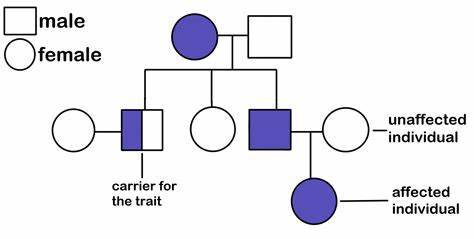
these guys were sooooo puzzling when I first looked at them. But once you get a feel for them, they aren't too bad. (Then they become a fun puzzle and you feel so smart and smug /pos)
Sometimes they'll include the half-shaded shape, sometimes they won't. On my practice exams they don't so I won't include talking about the half-shaded shapes (which are basically like telling you which ones are carriers, when nothing is half shaded then you have to figure this out yourself.)
Okay so first off, I typically look for sex-linked/autosomal traits. If the affected individuals are usually one sex (male typically) then the trait is sex-linked. If there's siblings and only the males (typically) are affected, then again - sex linked. (I wishhh we could learn biology with intersex people included it wouldd bee soo nicceee)
ALSO ALSO, if the mother is affected, then all of their children are affected - no matter what the trait of the male parent is - then I'd think the trait is passed on through mitochondrial DNA. (mitochondrial DNA is sooo coooool I need to reread those pub med articles. But overall, mitochondrial DNA comes from the female parent only because the male parent contributed only Nuclear DNA, the female parent contributed the cytosol and every organelle in it.)
From there, if neither of the above is true, then it's typically autosomal and either a recessive or dominant trait.
If it's autosomal recessive, then typically it will skip generations/ only some offspring will have it. It's just less likely that the recessive trait will appear, bonus points if there's four siblings and one of them is affected. (Not reallllyyy how it works in the real world since genotypes for each child is independent from the other children... but IDK pedigrees on tests and stuff tend to do this.) Also if none of the parents have it but some children are affected, then one or both of the parents are most likely carriers. (and if you can see the parents of the parents, you can typically find out which one).
Dominant ones just... tend to appear more. They don't usually skip generations, and if neither parent is affected, then the children won't be affected. (You can't be a carrier for a dominant allele under most circumstances... not sure if there's exceptions)
Pedigrees take a bit of getting used to, but they are FUN once you get a feel for them. (Tbh our ap bio class is kind of cursed, we went through a few teachers that all quit. Now I'm the honorary teacher of our class and honestly... I just got a feel for them. Practice I suppose? If you remember how different traits are inherited, then you should be good) Good luck with them!
Fermentation
OKay so not going to lie here.... I usually skipped over fermentation because I thought it would be boring. Once I saw this ask, I looked at it and it's... surprisingly not that bad? (At least to me, I'm insane.)
Okie so basically what happens is
~oxygen~ the most important molecule for us, breathe they say, breath is the language of the soul, our almighty oxygen...
... mops up the waste products at the end of the electron transport chain in oxidative phosphorylation (hydrogens) and turns into water.
But, despite how unromantic that sounds... it's super important. Because without our oxygen janitors, we can't do the electron transport chain. The waste products would build up and we'd probably burst into flames or smth (honestly that is what would happen if our cells tried to metabolize glucose all at once)
So cells that do fermentation decide to forgo the whole electron transport chain, best not deal with it.
So all it has is glycolysis. (I call it the carbon do-see-do, whatever that dance thingy is called. I don't know why.) I'll include a picture here of it

(knowing the names of the intermediate products is probably the hardest part.. I just... don't.)
Basically, add your phosphates to each side, split it in half, add another phosphate (not from ATP this time), Oxidize the heck out of the carbon molecules, then give those electrons to the NAD+, which turn into NADHs (One per half/three carbon molecule.), then you break off your 'caps' of Phosphates and add it to ADPs. ONce you add that extra phosphate, you make the ADPs into ATPs. Four of them total, but because you invested two ATPs, you got two 'new'/net ATPS.
I'll explain a few more concepts because I think I can do better than the textbooks if I do say so myself. (Especially the ones I got for school, mc graw hill ones.... like... ehhhhh it's so weirdly written. The book I read when I was little is called 'the way we work' gorgeous pictures and lots of metaphors, definitely one of the things that got me into biology, and helped me understand it.)
Adenosine triphosphate is basically a kitkat. Lots of energy stored within the last three phosphates on the side. (which slightly repel each other, so there's a lot of pent-up energy stored, which is why it takes all of cellular energy to make these, you have to go against the natural tendencies. The plus is that, like a kit kat, they are easy to break and release a lot of energy)
If you look at biochemistry, signal transduction pathway, transportation across the cell membrane, you use these phosphates (very negatively charged) to power EVERYTHING. Think of using an explosion to power your solar panels so you can make something. Like that. So when you do glycolysis, you're just adding those phosphates onto the ADPs to 'remake the Kitkat'/ put two negatively charged magnets together.
Basically, you're energy harvesting. The electrons hold energy, you take that energy from the glucose to give it to the NADH, your electron carrier.
HOwever, you can't do the electron transport chain. So now what do you do with the energy...
Discard it. You got two ATPs, and without oxygen, that's the best you're going to get. (Compared to around 38 ATPs with oxygen. Helpful little janitor.)
Essentially, you have pyruvate (the 3-carbon molecule you made from splitting glucose in half in glycolysis) and two NADHs that you need to turn back into NAD+ so you can do glycolysis again.
(IDk why I'm using second person now. By 'you' I mean the cell. ANd by the cell I mean I'm personifying, no one really 'wants' anything here. It just... happens.)
To do this, fermenting cells have this little trick, they basically give the electrons back to the pyruvates. Return them from whence they came. (apparently there's a good return policy)
If it's a muscle cell or yogurt or the likes, the NADHs give the energy/elections back to the pyruvate, which turns it into lactic acid.
If it's yeast, the NADHs give the energy/electrons back to one of the intermediate products of glycolysis. (I forget the name). This produces ethanol and CO2
So now you got your NAD+'s back. And you have two ATPs (net, four total). Not the... not the best but it's what you got.
OKIE DOKIE THAT'S IT. I RECCOMEND THE AEOMBA SISTERS IF YOU STILL NEED HELP /pos.
Favorite organelle
akldfjalskdfj tha's like askingg meee to chosee a favoritee ficitonall characterrrr.
..a jdflaskdfjaskdlfjaslkdfj
I can't pick favorites for anyythinggg.
LIke the ER does protein production, but the nucleus has the DNA and such, and of course we have the mitochondria (the powerhouse of the cell they say), and the Golgi body post office and the lysosome slaughterhouses and the centrioles with their cytoskeleton and their miotic spindle.... you can't do this to me /pos.
kladsfjasdf ENDOPLASMIC RETICULUM BECAUSE THE CELL MAKES PROTEINS THERE. kafjkaadlfkjaks AAAAA-
THank you for wishing me luck! I... I hope I don't ramble on the free response questions...or use metaphors... ha.
(also also, haven't really storyfied cellular respiration because...twas hard to storyfy. THey don't include the enzymes involved because it's too complicated. I tried my best!)
#cellular biology#biology#science#science side of tumblr#science side please explain#science side help me#science side of the internet#science side explain#pedigree#fermentation#lobotomy for my brainrot#noorie infodumps. be very afraid#noww do you all understand that tag? /pos
12 notes
·
View notes
Text
Science side of Tumblr, has anyone thought to give a sponge a kleenex? I mean, they're the only animals without tissues /silly
22 notes
·
View notes
Text
Science side of Tumblr: why did my asthma testing improve so much when I cut my vaping down from daily to about once a week even though I still vape?
#tw vape#tw: vape#tw smoking mention#tw: smoking mention#science#asthma#genuine question#/gen#/genq#/gen question#science side of tumblr#science side please explain#science side help me#science side explain#science side of the internet
11 notes
·
View notes
Text
Hey science people, why do I sleep better with my cat in bed with me? I am confusion
#science#cats#science side of the internet#science side of tumblr#science side help me#science side explain#science side please explain#kitty kitty makes me go#zzzzzzzz#fr shes my itty bitty baby and i love her more than anythinf#even when depression is kicking my ass and i want to shoot myself she makes me happy
36 notes
·
View notes
Text
hey science side of tumblr, what would happen to me if I used monster energy instead of water for my coffee and drank it? it’s a stupid question I know but I’m curious
#stupid question#stupid questions#science side of tumblr#science side please explain#science side help me#science side of the internet
18 notes
·
View notes
Text
science side of tumblr,
it me again, what tf is up with wave particle duality, scientists just be like welp we dunno is it wave??? Is it particle??? can’t make up minds so they say both???
please send help, am dying of confusion
#science side of tumblr#science#science side explain#science side of the internet#science side please explain#science side help me
28 notes
·
View notes
Text
I know it’s probably impossible, but if it theoretically were, what would helium-based life be like
#science side help me#science side of the internet#science side of tumblr#i don’t need sleep i need answers
11 notes
·
View notes
Text
I went to a friend's house 2 months ago and hit my head really hard on her doorframe (like I thought I died for a few seconds hard) and ever since then I keep having the exact same dream where everything I touch turns into cheese.
I also keep waking up at ungodly hours if the night only to find myself standing in front of the fridge, usually holding a bag of cheese or a block of cheddar specifically... he worst part is I don't even like cheddar....
SCIENCE SIDE IF TUMBLR!!!
#What the heck is wrong with me?!#cheese#science#science side of tumblr#science side help me#science side please explain#science side explain#science side of the internet
5 notes
·
View notes
Text
Yo science side of tumblr why did the spider in my bathroom just tear off another spiders legs over the course of about six hours and then discard the body?
#spiders#tw spiders#Tw possibly cannibalism? Idk#Bc I know that spiders eat each other after mating but uh. Spider one did not eat spider two just pulled off it's legs and threw the body#insect#science side of tumblr#science side please explain#science side of the internet#biology
3 notes
·
View notes
Text
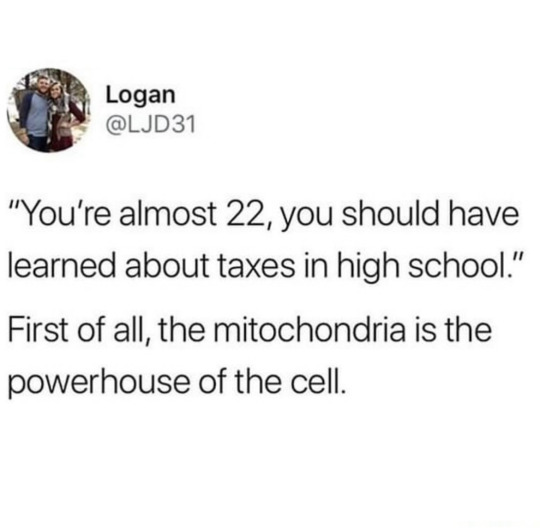
#mitochondria is the powerhouse of the cell#all I know is mitochondria#mitochondria#science side#science side of the internet#dank memes#dankest memes#memes#mental meme#memes are my coping mechanism#memes are my love language#i’m offended by this relatable content#science side explain#relatable memes#science side help me#science side please explain#science side of tumblr#science#research scientist#biology#the real scientific method#scientific method#scientific shit
35 notes
·
View notes
Text
A question for the science side of Tumblr:
If I snort coffee powder, does it have the same affect as drinking regular coffee?
#coffee#funny#blursed#cursed#science#science side of tumblr#science side of the internet#explain#drinks#tea#coco
8 notes
·
View notes
Note
Random ask, can I ask what are apoptosis and caspases (in simple terms)?
I have been summoned
(my 'noorie rambles. be very afraid' tag will make so much sense now. I tried to talk about it in a way that's a way that's both engaging and simple. Lots of metaphors.)
Caspases destroy the cell if it needs to die. They dismantle the cell parts as the cell membrane turns into bubbles, containing all the damaged pieces within so that a white blood cell might disposes of them. That's apoptosis in a nutshell.
But why must the cell die you ask?
Plenty of reasons. Human embryos have webbed fingers, and apoptosis causes the webbing to dissipate. Tadpoles too, use apoptosis to rid of their tails so they can become frogs. Apoptosis opposes growth - aka mitosis - and it keeps the body in homeostasis - or a balance of sorts. The destruction to mitosis's creation.

However, what I find most interesting, what is the subject of much research nowadays, and what holds the most opportunity for angsty biology fanfics (most important/j) is that apoptosis opposes tumorigenesis. In other words, if something goes wrong, if the cell gets some notion that it might try to cheat death and live forever, if it has the inklings of an idea to hijack the rest of the body through growing its own lump of cells and draining the body of its nutrients... if it decides to throw a mutiny at the expense of peace...
Then the cellular system realizes, and it activates the caspases.
(Usually how a cell 'decides' is when something wrong happens with genetic replication, mutations and such and such. There are two labels of genes relating to this. Proto-oncogenes promote cell growth and avoid apoptosis - these are the creation genes, the ones that wish to achieve the heights of production and throw all caution to the wind. Whereas tumor suppressor genes are... tumor suppressors. They are the little 'angel on the cell's shoulder' that says 'you've done wrong, now commit cell death and accept your fate'. When a proto-oncogene mutates, it becomes an oncogene. Basically, the genes that said to grow for the sake of the body now says to grow at the expense of the body, the 'devil on the cell's shoulder' won... and now it'll try to cheat death)

Caspases are a type of enzyme, which is a subset of proteins. I like thinking about it like this: enzymes are witches, spell crafters. Proteins in general function like worker bees, but enzymes are the ones who actively create and destroy, the ones that change the way the universe manifests so life can exist. They utilize reactants from their environment - materials which they are named after, such as proteases that cleave other proteins - to either create larger, energy storing molecules (endergonic reactions), or break down large, energy storing molecules to release energy (exergonic reactions).
(One type of enzyme that I like is called kinases, they basically initiate things, they tell the cell 'it's okay to do things' or 'this will be dangerous, let's not do that', or 'oof this cell doesn't have the proper genes, that could be a problem, how about we destroy everything so this doesn't become a big issue?')
When the cell needs to die, the caspases activate.
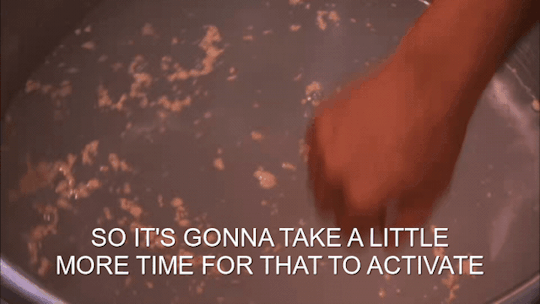
Humans have 14 caspases. I wish I knew what all of them are, but the pub med articles I read do not have a whole list of them like a pokedex from pokemon (at least that I have read so far, after ap testing there's one article I want to read that seems to have ANSWERS to a lot of my questions)
So imagine this, the cell has lots of caspases floating around in the cytoplasm/water jelly environment. These beings of death in huge numbers in a perpetual slumber, just floating around, until the cell decides it needs them to destroy its existence, and it activates them.
(ALTHOUGH some of my questions refer to the "caspase-dependent non-lethal cellular processes", so far what I've been able to find is that if the cell needs some repair to the cytoskeleton/structure of the cell, then it activates a few caspases to destroy parts of it, so that the repair may start.)
There are two types: inflammatory caspases (if I remember correctly, this is caspase 1,4, and... a few others I'll have to check) and apoptotic caspases. What we're interested in are the apoptotic caspases. Initiator caspases get activated first. The way I story-fy them/see them in my head is as the older sibling types who condone violence. If the cell needs to die because of an external signal - a message from far away to destroy itself, to which it must oblige - then caspase 8 activates. If the cell needs to die because of an internal signal - something inside isn't right, and what a havoc it would be to pass that on through replication, so the proteins decide the fate of the world it lives in, and it choses death for the sake of the wider body- then caspase 9 activates.
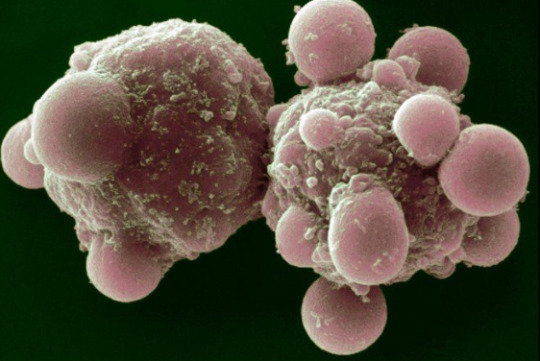
Both these initiator caspases cleave (meaning 'cut', these inactive beasts are not yet 'complete', so they need further modification after activation to work properly. If the cell were to create caspases fully functional and finished, the large number of caspases would kill the entire cell, so they don't finish, they subdue the ones behind their death, and make sure to regulate their slumber.) their 'younger, violent siblings': caspase 7 and caspase 3. The doll I have is a caspase 3.
(I've found more information on them than caspase 7... although.. the one article I found.... it should have information on them all, the amount of searching I've done for those sorts of answers... but alas... I need to read the material for the ap bio exam... which does not include caspases.... one day...)
Caspase 3, as far as I could gather, destroys the cytoskeleton. The cytoskeleton supports the entire cell, acting as the 'tent poles' that keep the floppy cell membrane from collapsing. Collapsing, however, is exactly what the caspase 3 wants. It dismantles the whole thing, along with activating and inactivating a slew of other proteins. (it's an assassin basically.)
And with this, the caspases bow, for the cell is separated within these small little 'blebs' (they look like bubbles) and the cell is destroyed.
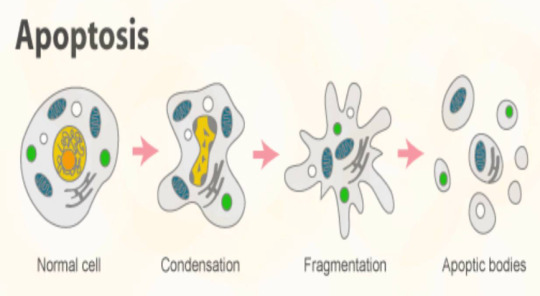
OH AND LAST LITTLE THING!
If something inhibits the caspases, the cell goes through with necrosis, which is basically instead of becoming little bubbles, the cell membrane ruptures and the cell 'guts spill out'
THANK YOU SO MUCH FOR THE ASK!! <3 <3 I got to blabber about caspases and it gave me happy sparkles.
ALSO, here's the doll I made for caspase 3:
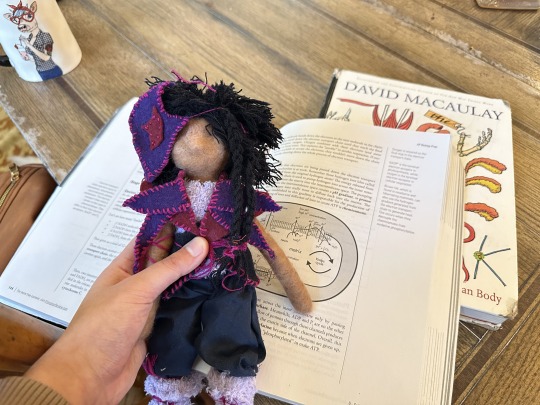
#biology#scientists#science#apoptosis#enzymes#caspases#science side of tumblr#science side of the internet#noorie infodumps. be very afraid#noorie answers asks#lobotomy for my brainrot
9 notes
·
View notes
Text
science side of tumblr why can't i just file my nails really sharp and grab on really tight and R I P the quarks apart
#physics#nuclear#nuclear physics#science#science side of tumblr#science side help me#science side of the internet#science side please explain
2 notes
·
View notes
Text
Science side of Tumblr please explain why sonic is in my embryology book?

15 notes
·
View notes